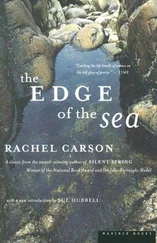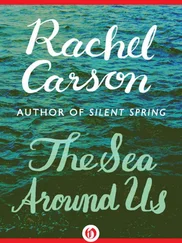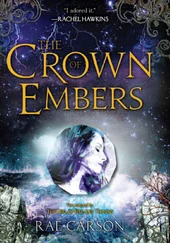Fournier d’Albe was indeed an extraordinary figure, a Fellow of the Institute of Physics, Vice-President of the Radio Association, and the author and translator of numerous scientific books. He shared the year of his birth, 1868, with James Connolly. He was a fluent speaker of German, French, Italian, Irish, Manx and Esperanto, and had published an Irish — English dictionary and phrase-book. In 1912, the year of the sinking of the Titanic , he invented the type-reading optophone, which, by converting the light refracted from a page of printed matter into musical notes, enabled a blind person to read. He was responsible for the transmission of the first wireless picture — of King George V — on 24th May 1923; and in 1926, at the 18th World Congress of Esperanto, held in Edinburgh, he delivered a paper on ‘Wireless Telegraphy and Television’. In 1907 he published Two New Worlds , ‘an attempt to penetrate the mystery of time and space with the help of the most modern resources of scientific research’: in it, he proposed a hierarchical clustering model for the structure of the universe which anticipated modern fractal theory. Fournier’s fractal can be visualised if we take one of a pair of dice and look at the side representing the number 5, known as ‘Phoebe Snow’ in gambler’s slang. Four of the dots are located at the corners of a square and the fifth is located at the centre. Let us imagine that each dot is really a miniature Phoebe Snow, and further, that each dot of the miniature Phoebe Snow is a microscopic Phoebe Snow. This constitutes three scales of the self-similar structure; but Fournier d’Albe went much further and imagined the pattern repeating ad infinitum, in a dizzying blizzard of self-replication. Worlds lay within worlds in nested frequencies. Atoms and stars, electrons and planets, cells and galaxies all moved to the same measure. Clouds, coastlines, earthquakes, the fluctuations of the stock market, all corresponded. A flag snaps back and forth in the wind, and a column of cigar smoke breaks into an anxious swirl. A pirouette of litter on a street corner heralds a tornado. A pin drops in an auditorium, a bomb goes off. Like patterns were apparent everywhere. The All was immutable, but the detail was ever new. The event, the incident, the individual was unique, unprecedented, irrecoverable; but the equilibrium was eternal.
In addition to his other achievements, Fournier d’Albe was a noted investigator of paranormal phenomena. While he recognised that the vast majority of these were spurious, a matter of imposture and the desire of many people to believe in an afterlife, or to believe in anything, there nevertheless remained some instances that were inexplicable to science; and he thought that these might be accounted for by some kind of slippage between the infinite worlds proposed by his theory. He was familiar with the work of W.J. Crawford and had corresponded with him briefly before his suicide in 1920. In May 1921 he travelled to Belfast, where he took up lodgings for four months, during which time he conducted an intensive study of the phenomena produced by the Goligher circle. After observing a séance at the Morrison home, and another at the late Crawford’s, Fournier d’Albe rented an unfurnished attic at 40 Fountain Street, in the city centre, to which he transferred the equipment used by Crawford; and here he conducted investigations into a further eighteen sittings, summarising his findings in a monograph, The Goligher Circle , published by John Watkins of London in 1922.
He had gone to Belfast hoping to find a medium who was somehow in touch with an alternative reality, a correspondent with another universe. But as he subjected Kathleen Goligher to more and more rigorous controls it became apparent that trickery was being used, and he came to ‘a definitely unfavourable conclusion regarding the whole of the phenomena’. A final sitting on 29th August produced no results. Kathleen Goligher indicated that due to indisposition she would not be giving any sittings to Fournier d’Albe, or to anyone else, for at least twelve months; and she never again submitted herself to scientific scrutiny. Fournier d’Albe had found the Goligher Circle to be ‘an alert, secretive, troublesome group of well-organised performers’. He seemed to have proved conclusively that the ‘operators’, far from being agents of a world beyond the grave, were none other than the members of the Goligher Circle themselves. Yet Fournier d’Albe’s findings were disputed by those who wished to believe, and to this day there were still those who believe in Kathleen Goligher’s ability to produce ectoplasmic rods and cantilevers, just as there are those who believe in Uri Geller, or the reality of alien visitations.
D’Albe kept a meticulous record of his dealings with the Goligher Circle, going so far as to note the weather at the time. I learned that the summer of 1921 was a typical Irish one: 1st June, for example, was showery and cool, while 6 June was hot and sunny. I was much taken by the coincidence that 40 Fountain Street, where the sittings took place, is the current location of the XL Café, and, as I read these brief reports of the weather, I imagined myself walking along the street one of those June days, feeling the breeze or the rain or the sun on my face, before going in for a cup of tea, where I might meet your counterpart. Then it occurred to me that the circumstances might not have been so idyllic.
D’Albe’s stay in Belfast coincided with a period of civil unrest that came to a head shortly after the opening of the first parliament of Northern Ireland on 22nd June, when Catholics were driven en masse from their homes and jobs by the UVF. There must have been gunshots to be heard as well as the rappings produced by the Goligher Circle, for the UVF had attacked Catholic homes in the New Lodge Road, not far from the city centre. My own father’s father had been expelled from his job as a fitter in Harland and Wolff’s, the shipyard that built the Titanic . In an attempt to discipline the loyalists, the government in Westminster recruited a Special Constabulary, but when a number of them joined Protestant mobs in Belfast on 10 July, they came to be regarded as enemies of the Catholic community. Plus ça change . The Specials were part of the loyalist mob which infamously attacked the Civil Rights march at Burntollet Bridge on 4th January 1969. Hughie Falls was there, among the injured, and his photograph appeared in the Irish News . Long-haired, bearded, eyes staring wildly, blood pouring from a head wound, he cut a heroic, Christ-like figure, and for many months afterwards did not lack female companionship.
Is that the Hughie Falls you knock about with? my father asked me when he saw the picture. Yes, I said, not being inclined to deny him. Well, said my father, he might be a hero, but his father, Tommy Falls, was a rogue. How’s that? I said. He was a scab, said my father, he broke a postal workers’ strike back in the Thirties. And how did the strike end up? I said. My father sighed. Oh, we had to go back, without a penny more than what we started with. So it was pointless anyway, I said, whether Tommy Falls was a scab or not. Not pointless, said my father, it was a matter of principle. Of comradeship. And that was the end of that conversation.
You knew my father a bit, Nina, you knew he was a man of principle. And yet. You remember that time he bumped into us in the XL Café? He had taken quite a shine to you, you know, I think sometimes he even flirted with you a little. There’d been a little item in the paper about him that morning, about his work with Irish and Esperanto, how he’d kept them going when it was neither profitable nor popular, that kind of thing, and you complimented him on it, wondering how he’d found the time for it when he was working — he’d been retired a year by then — that his job as Inspector in the Post Office must have quite demanding. Oh, not at all, he said, I was a bit of a straw boss, you know, I just put in an appearance every now and again, and I could nip out whenever I wanted to, like now. The postmen did the real work, the way I used to.
Читать дальше












